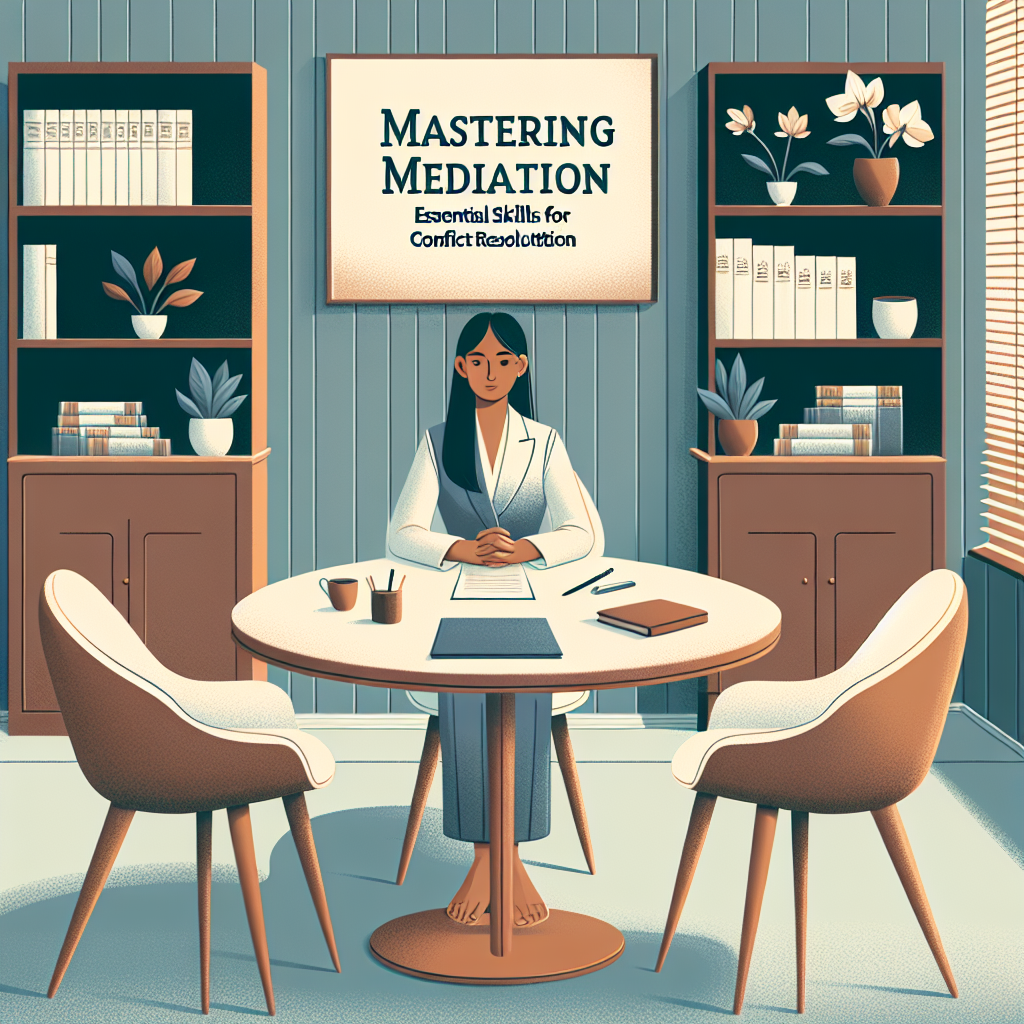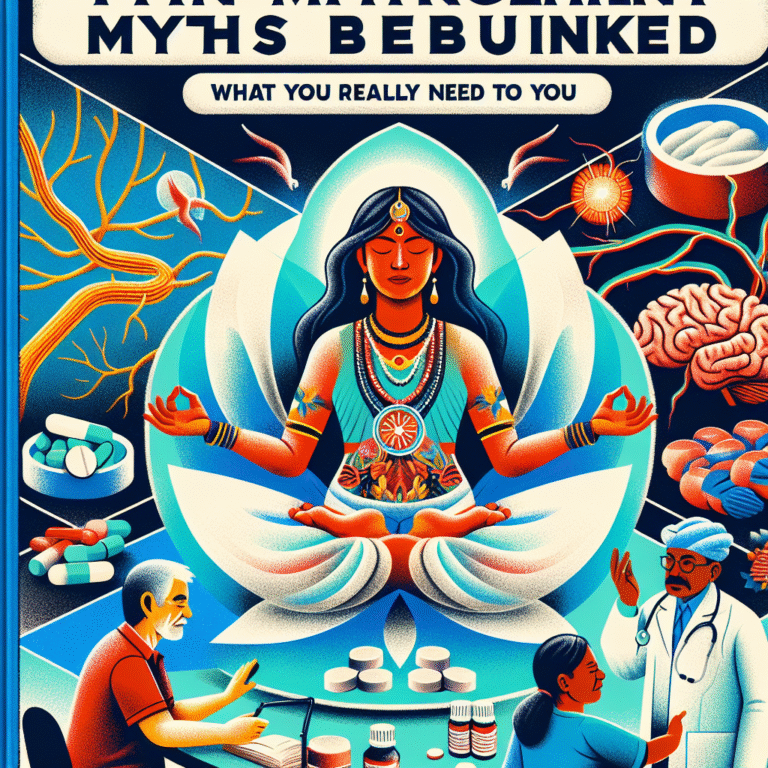
Introduction
Conflict is a natural part of life—whether in personal relationships, workplaces, or communities. Mastering mediation: essential skills for conflict resolution has never been more crucial. In an increasingly polarized world, the ability to navigate disputes gracefully and effectively can lead to more harmonious interactions and better outcomes. Imagine resolving disagreements without escalating tensions, facilitating collaboration rather than conflict, and fostering a sense of community. This article will explore the core components of mastering mediation, equip you with essential skills, and provide practical advice for real-world application.
The Importance of Mediation
The Growing Need for Mediation
In our hyper-connected society, misunderstandings can occur in an instant. From social media spats to workplace disagreements, the need for skilled mediators is evident. Mediation serves as a peaceful alternative to litigation. It offers a platform for dialogue, enabling parties to express their concerns while seeking mutually beneficial solutions. By mastering mediation, you foster a culture of cooperation and understanding.
Real-World Applications
Consider Alice and Bob, colleagues who find themselves at odds over a project. Instead of allowing frustration to brew, they opt for mediation. With a third-party mediator, they articulate their grievances and, through guided discussion, identify a resolution that honors both perspectives. This scenario illustrates the tangible benefits of conflict resolution through mediation.
Essential Skills for Mastering Mediation
Active Listening
Active listening is the cornerstone of successful mediation. It involves fully concentrating, understanding, and responding to what others are saying. Here are some techniques:
- Reflective Listening: Restate what the speaker has said to confirm your understanding.
- Nonverbal Cues: Maintain eye contact and use nodding gestures to indicate attentiveness.
- Ask Open-ended Questions: Encourage dialogue by using questions beginning with “how” or “what.”
Empathy
Empathy allows mediators to connect with the feelings and emotions of each party. It helps build trust and fosters a safe space for dialogue. Techniques include:
- Validation: Acknowledge the feelings expressed by each participant.
- Emotional Labelling: Use phrases like “It seems you feel…” to express understanding.
Neutrality
Maintaining neutrality is crucial in mediation. A mediator should not take sides or show favoritism. This can be achieved by:
- Avoiding Personal Biases: Stay aware of your opinions and beliefs.
- Facilitating, Not Controlling: Guide the discussion without imposing your views.
Problem-Solving
A mediator’s goal is to help parties identify solutions. The problem-solving process involves:
- Brainstorming: Encourage participants to generate multiple solutions without criticism.
- Evaluating Options: Assess solutions based on feasibility and impact.
Communication Skills
Clear communication can bridge gaps and clarify misunderstandings. Practicing these techniques strengthens your mediation abilities:
- Clarify and Simplify: Use plain language and summarize points made during discussions.
- Summarization: Regularly summarize discussions to ensure all parties are aligned.
Cultural Competence
In a diverse society, understanding cultural backgrounds is essential for effective mediation. Developing cultural competence involves:
- Awareness of Differences: Recognize that communication styles, values, and perceptions vary across cultures.
- Inclusive Language: Use language that respects and reflects the diversity of the parties involved.
Case Studies: Real-World Applications of Mediation
Case Study 1: Workplace Conflict
Situation: A tech startup experienced escalating tension between its marketing and product development teams, leading to conflicts over project priorities.
Mediation Process: An external mediator facilitated a two-day workshop. Their focus was on active listening and empathy. Through structured dialogue, both teams shared concerns and collaboratively developed a strategy for future projects.
Outcome: The teams agreed on clear goals and regular check-ins, significantly improving collaboration and productivity.
Case Study 2: Community Dispute
Situation: A neighborhood group clashed over a proposed park renovation, with residents divided on design elements.
Mediation Process: A local community mediator organized a series of meetings, ensuring all voices were heard. Participants used problem-solving techniques to prioritize features collaboratively.
Outcome: The project moved forward with a design that reflected a consensus, fostering a greater sense of community.
Mastering Mediation: Essential Skills for Conflict Resolution
Practical Strategies for Implementation
To become proficient in mastering mediation, consider these actionable strategies:
- Seek Training: Attend workshops or courses focused on mediation skills.
- Practice Regularly: Engage in role-playing scenarios to build confidence.
- Reflect on Experiences: After each mediation, reflect on what worked and what didn’t.
Building a Mediation Toolkit
Creating a toolkit can aid in mastering mediation:
- Guidelines for Mediation: Outline steps for effective mediation processes.
- Resources: Compile articles, books, and tools that support your learning.
- Networking: Join mediation groups or forums to exchange ideas and experiences.
Visualization Techniques
Utilizing visualization can enhance skills, especially under pressure:
- Pre-Mediation Visualization: Picture yourself successfully navigating a mediation session.
- Post-Mediation Reflection: Visualize the positive impact of resolving disputes effectively.
Common Concerns and FAQs
1. What if the parties refuse to cooperate?
Sometimes parties may resist mediation. Emphasize the benefits of a mediated approach and explain how it can lead to more favorable outcomes than conflicts.
2. How do I handle emotional outbursts during mediation?
Maintain composure and redirect the conversation. Use calming techniques and allow time for emotions to settle before continuing.
3. Can mediation work in high-stakes situations?
Absolutely! While more complex, skilled mediators often facilitate resolution even in high-stakes scenarios by ensuring fairness and respect.
4. How can I ensure confidentiality during mediation?
Establish ground rules at the outset, ensuring all parties agree to keep discussions confidential.
5. What if the parties reach an impasse?
Encourage brainstorming and revisiting underlying interests. If necessary, consider scheduling additional sessions to allow for further reflection.
Conclusion
Mastering mediation: essential skills for conflict resolution are invaluable in today’s conflict-prone world. By honing skills like active listening, empathy, and neutrality, you not only enhance your conflict resolution capabilities but contribute positively to your community.
As you embark on this journey, remember that the power of mediation lies in fostering understanding and collaboration. Embrace the challenges, celebrate the victories, and continue to refine your skills. Your ability to mediate can transform conflicts into opportunities for growth and connection.
By adopting these principles and practices, you’re not just resolving disputes; you’re becoming a catalyst for positive change. The art of mediation is not merely about finding solutions—it’s about nurturing relationships, building bridges, and creating a more harmonious world.
Ready to Transform Conflict?
As you explore your path toward mastering mediation, consider how these essential skills can impact various areas of your life. Whether in the workplace, family dynamics, or community settings, your newfound abilities will serve you—and those around you—well.
Remember, the journey of a thousand miles begins with a single step. Take that step toward mastering mediation today!














